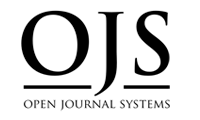Bacterial pollution indicators associated in the tissues of an estuarine fish Mugil cephalus from Ashtamudi lake, a Ramsar site of Kerala, India
Main Article Content
Abstract
Fishes are continuously exposed to the microorganisms present in water and in the sediment. The present study was attempted to screen the pollution indicator bacteria in the tissues of an estuarine fish Mugil cephalus from Kureepuzha Backwater, a part of Ashtamudi Lake. Total heterotrophic bacteria, total coliform bacteria, Escherichia coli and fecal streptococci were enumerated from the fish tissues using standard microbiological procedures. Comparison of bacterial count in the skin, gill and gut of Mugil cephalus revealed that highest count of indicator microbes were found in the skin followed by the gill and gut of fish from all sites except site 4. Fishes from site 4, they show bacteria predominantly in the gut. Two way Anova showed a significant difference in microbial count between sites and between tissues except Total heterotrophic bacteria and fecal streptococci between sites. Results of physico chemical parameters also supports that the anthropogenic activities accumulated in the study area, causing the disruption of hydrological quality of Lake and thus increases the load of detrimental microorganisms. Hence it is recommended that good processing of fish such as washing, scraping scales, removal of gills and gut contents and proper cooking help to reduce microbial pathogen in fish body and make it safe for consumption.
Article Details

This work is licensed under a Creative Commons Attribution-NonCommercial-ShareAlike 4.0 International License.



